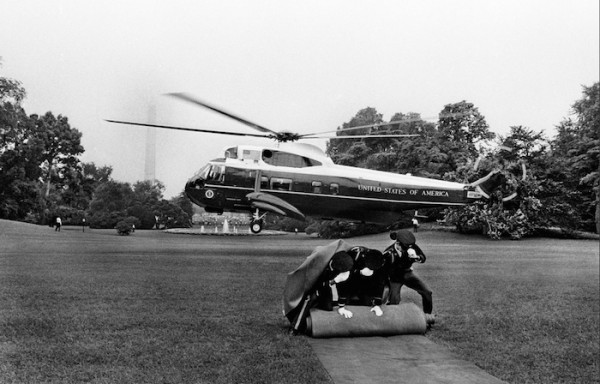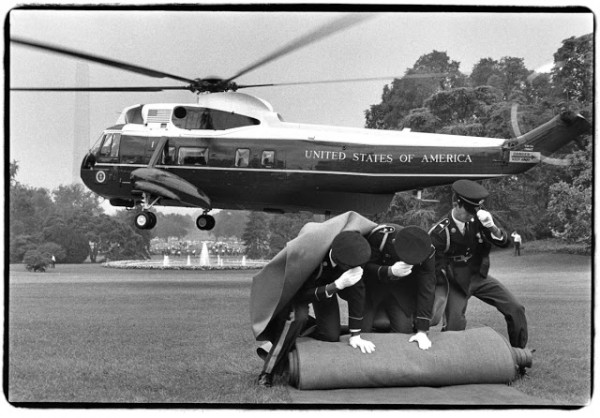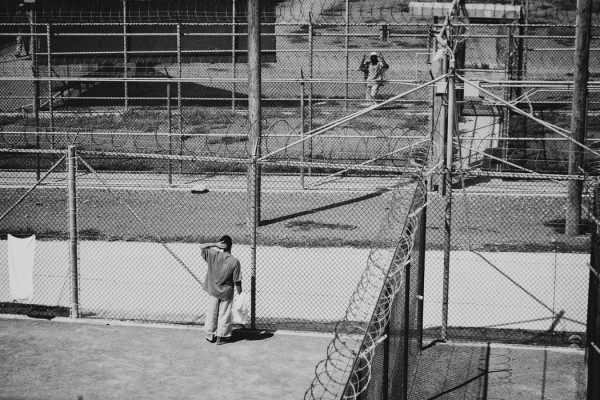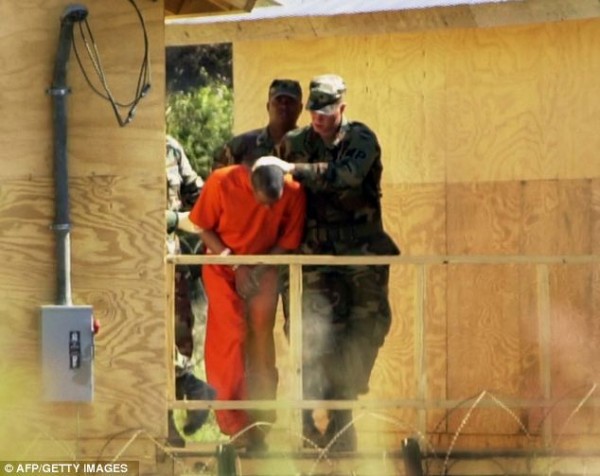Notes
America from the Outside: Nixon's Prop Wash by Jean-Pierre Laffont … and Annie Leibovitz
For some time, I’ve been interested in how visual observers and visual media look at America from a distance. That could mean foreign media, foreign-owned media with an American presence or, in this case, foreign born photographers who have otherwise spent time (even if most of a lifetime) in the States. The other day, the NYT Lens featured the work from a new book by photographer Jean-Perre Laffont. Laffont, raised in North Africa, moved to New York from Paris in ’65 at the age of 30.
What caught my eye from the Lens slideshow was this version of Nixon’s final departure from the White House. Of course, it couldn’t be more different then that iconic scene hardwired into the America consciousness — such as this or David Hume Kennerly’s more dignified this. If the iconic image of Nixon’s farewell is fully tinted with shame, it’s also sensational, laced with pomp and ceremonial dignity, if not for an American president than for the office.
Laffont’s version has none of that baggage and presumes none. Instead, he takes the ceremony, along with the pretense, and sticks a fork in it. (A delicious touch also involves the blade of the presidential helicopter, with its load of kryptonite, seeming to slice through the Washington Monument.) What’s profound about the photo, however, is how Laffont — in bold contrast to anything else we’ve seen or saw — situates it time. Specifically, time going forward. (In this way, it actually reminds me of Grant Park, election night, 2008, the figidty Obama so dying to get the celebration over with to tackle Bush’s election gift, the downward spiraling financial meltdown.)
Yes, what’s fabulous and “foreign” about the photo is how it rejects ceremony, drama and any American self-reflection for the violence of the air current, for the raveling and the unraveling, for the turbulence of the aftermath.
“Weekend” Update — 6:15 PM PST: As happens sometimes — because how often is a historic political moment that unique? — I received an email this afternoon pointing out that Annie Leibovitz (certainly, a product of the homeland) shot a very similar photograph that auspicious Friday afternoon. (According to this account from an exhibition tour, it was taken on assignment for Rolling Stone, AL on assignment with Hunter S. Thompson.)
Before taking myself to task for either the gap in my political photo history or not enough background research, however, I did a closer comparison of the two shots. On closer inspection, I would submit that Leibovitz’s much tighter version is less ironic than sarcastic, the scene of the three soldiers (the left two almost comically identical and the third clearly groping for his hat) having almost the quality of an SNL routine. Given the cumulative enmity toward Nixon at the time, that’s thoroughly understandable. Saturday Night Live, by the way, launched in October ’75, would probably qualify as one of the cultural by-products to unfurl from the political cynicism that followed the Nixon fiasco. (And how close was this long running riff to the Leibovitz photo?) To the extent Laffont’s photo is that much more distant and ambiguous, however, it’s editorially a lot bolder and more complex. There’s pathos … and then there’s bumbling.
(photo: Jean-Pierre Laffont. caption: President Richard M. Nixon and his wife levying the White House in a helicopter, going to their home in San Clemente, Calif., after resigning his office in the wake of the Watergate scandal. Washington, D.C. Aug. 9, 1974. inset photo 1: Bettmann/Corbis. inset photo 2: David Hume Kennerly / Getty Images. photo 2: Annie Leibovitz/Rolling Stone caption: Richard Nixon leaving the White House. Rolling Stone, Sept 1974)




Reactions
Comments Powered by Disqus